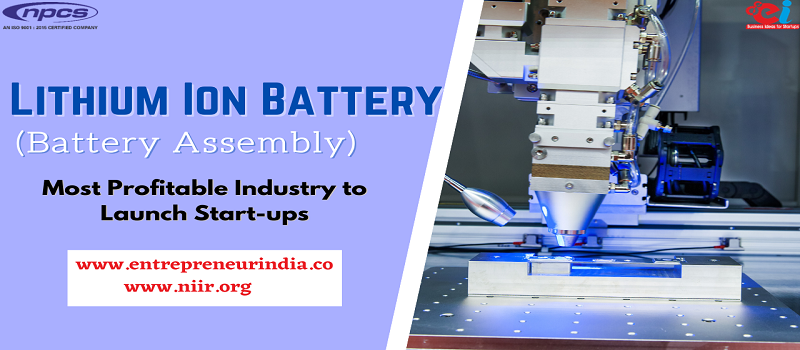Lithium Ion Battery (Battery Assembly)
Most Profitable Industry to Launch Start-ups
It’s not hard to see why lithium ion batteries are so popular. They’re lightweight, long-lasting, and they have excellent discharge characteristics. But assembling these batteries isn’t as simple as it may seem, and this process requires plenty of precautions to ensure a safe assembly. If you’re looking to get started in the battery assembly business, these guides can help you with everything from product design to production controls.
Visit this Page for More Information: Start a Business in Lithium-Ion Battery Production
There are different kinds of lithium ion batteries, and they vary in many ways from one another. Lithium ion batteries are also made in different shapes and sizes, which also help to differentiate them from one another. Aside from their shape and size, lithium ion batteries differ in voltage and amperage (they can be either 3 volt or 4 volt, 1 amp or 2 amp).
Related Business Plan: Start Assembling of Lithium Ion Battery (battery Assembly)
Lithium Ion Battery Assembling Process
Usually, all electrodes except cathode is assembled first, then powder coating process is followed by assembly of cathode and anode. Cathode sheet and anode sheet will be punched and stacked into pouch which will be folded with separator into cell. During Lithium Ion battery assembling process, first of all positive electrode (anode) is stacked on negative electrode (cathode), then pressed several times until electrode materials are firmly contact with each other.
Watch Video:
And then electrolyte solution (mixture of polyelectrolytes in organic solvent) is applied to all over electrodes, it’s done for two reasons:
- It prevents oxidation of metal particles at surface of anode;
- Conductivity improvement through applying electrolyte between electrodes’ surface and separator wall make it possible for current flow between them. After that, Heat sealing is used to weld (heat-weld) both ends of cathode cavity on aluminum foil at bottom of Lithium Ion battery pack to seal out atmosphere from inside.
Related Feasibility Study Reports: Battery Projects, Automobile Batteries, Lead Acid Battery, Lithium Battery, Lithium-Ion (Li-Ion) Battery, Maintenance Free Rechargeable Battery, Battery Recycling, Battery Plate, Battery Separator
Because exposure to air or water may affect capacity of battery when being used later. Positive electrode plate, negative electrode plate, separator and plastic backing plate form a sealed cavity without any contact with outside atmosphere which can maintain sufficient voltage when installed later. After batteries are heat sealed, if needed, electrical test devices can be connected to electric terminals. Then pressurized gas charging starts.
Read our Books Here: Books and Database
Pressure must reach twice as much as pressure during normal working process while charging time must not exceed 30 hours or cycle life of battery will decrease rapidly. Charging pressure depends on kind of materials used in electrode products but there’s no explicit regulation about it in official standards so that manufacturers tend to use lower than its standard pressure when making Lithium Ion batteries.
Read Similar Articles: Battery Projects
Benefits:
The primary benefit of lithium ion batteries is that they don’t produce gases when they discharge, so they can be safely used in electronic devices. Lithium ions are lighter than other metals and liquids commonly used in batteries and offer a much higher capacity per unit volume. Because they have no liquid inside, they can charge quickly—in just 10 minutes or less! They also last longer than conventional rechargeable battery.
Watch other Informative Videos: Battery Industry
Market Outlook:
A lithium-ion (Li-ion) battery is a rechargeable battery that uses lithium ions as one of its electrochemical components. Due to their expanding use in consumer devices, particularly mobile phones and tablets, the lithium ion battery industry has witnessed a major growth in demand in recent years. These batteries are also utilized in electric vehicles like hybrid cars and battery packs. As the need for energy storage grows, these batteries are being used more frequently in grid storage applications.
The global lithium-ion battery market is expected to reach $129.3 billion by 2027, with a compound annual growth rate (CAGR) of 18.0% from 2020 to 2027. Higher energy efficiency requirements in technologically advanced consumer electronics are likely to give key companies with a growing lithium-ion battery market potential.
See More Links:
Start a Business in Potential Countries for Doing Business
Best Industry for Doing Business
Business Ideas with Low, Medium & High Investment
Looking for Most Demandable Business Ideas for Startups
Start a Business in Middle East
Related Market Research Reports

